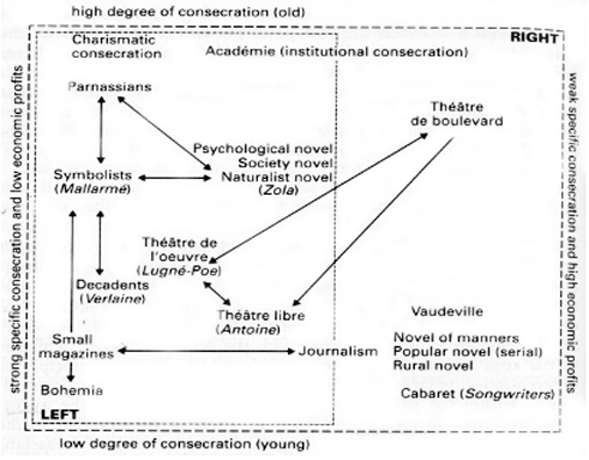
Here are some thoughts on the final three stories in
The Mammoth Book of Alternate Histories. What was going to follow was a complete review of the volume as a whole but I've written that up for the journal
Foundation instead and so can't post it up here, you'll just have to buy the journal instead. It's also part of the reason why this is going up so late (that and
Twisted Tales). If summaries are even less comprehensive than normal the please forgive me, it's been a while.
An interesting story because it approaches a historical divergence less commonly displayed than others. Sargent posits a global Khan, a Mongol Empire that stretched from Western Europe to Eastern North America. Some of the last unconquered peoples are the "Inglistani" and, crucially, the Native American tribes of the American North-East. In an attempt to rid North America of the Inglistani, and to give them nowhere to seek refuge once the European Khans take Britain, a force of Mongols and Native Americans wage war on the colonial settlements. Sargent draws on a lot of the imagery and tone of the
Leatherstocking Tales in suggesting a Mongol protagonist who as a child was adopted by "The People of the Long Houses" (The Iroquois Federation) as one of their own and raised in their culture. This allows Sargent to present an interesting comparison between the typically represented "pure" and "noble" Iroquois peoples and the Mongols, once similarly nomadic and spiritual but now corrupted by power, greed, and the wealth of conquered Europe. I always feel like these stories idealised Native American lifestyles and philosophies, and yet I also enjoy the aesthetic of such approaches (
The Last of the Mohicans was one of my favourite reads from my Undergraduate reading lists). Maybe I'm wrong and life really was that rich and rewarding, after all I have no first hand experience and little second hand knowledge of Native Americans. It seems to me odd however that the Mongolians would only reach the epiphanies they reach in this story once they reach the Atlantic, they will have passed by, probably crushed, and expanded over many other tribes in the West of the continent such as the Californian tribes which are such an influence to
Ursula Le Guin's fiction.
I loved this story. It doesn't even do anything particularly amazing in itself, but a number of factors come together to make this story in particular stand out as something a little bit different to the other tales in the anthology. At first it seems we're being presented with a standard "What if the Roman Empire never fell?" proposition, however instantly making this story noteworthy is that the protagonist, Julius, is a "sci-rom" writer. Desperately in need of an idea for a new novel to fulfil his publishing contract, he travels to Alexandria where a conference is being held to discuss the Olympians, a [
Culture-like] multi-race organisation, who have made first contact with Earth and are travelling on a years long journey to visit in person. Whilst in Egypt a friend of Julius's, and a scientific advisor to the Roman state on all matters Olympian, Flavius "Sam" Samuelus, suggests "a whole new kind of sci-rom" about an "alternate world" which plays host to the question "what if history had gone a different way?" I love the meta-alternate history elements of this story, even if they are simply a cover for Pohl to explain where his world deviated from ours (Christ was never crucified and so Christianity, lacking a martyr, lost momentum), although he does include some "
Grasshopper Lies Heavy"-like supposition about a world alternate to theirs which still isn't ours. Overall, I enjoyed the science fiction and meta-narrative elements of this story and it made a nice complement to the others in the collection, not necessarily better but just different enough to be enjoyable.
The Catholic church are easy targets for alternate history, as evidenced by Keith Roberts's
Pavane. Not quite as easy as Nazis, but easy nonetheless. Baxter depicts a world held back technologically by the church, where Terra Australis (Australia) is a world leader in scientific development (far from the gaze of the Vatican). This was one of the specially commisioned tales for the anthology and its likely that is was inspired by the recent flurry of media attention given to Charles Darwin for the 150th anniversary of the publication of his Origin of Species, as well as his
200th birthday. The story features humour and grisliness in equal amount as Darwin's bones are exorcised and put on trial for heretical thinking. "Commisary Hitler" makes a cameo reference for his "Missionary Wars" in Russia, whilst there is also a nice reference to
H.G. Wells and a novel entitled "War of the
Celestial Spheres", punning on
The War of the Worlds and the old-church belief in celestial astronomy (Baxter also wrote,
The Time Ships, the excellent authorised sequel to Wells's
The Time Machine which involves the development of several alternate histories and futures). This is a superbly crafted story, as you'd expect from a man who has written as extensively in the alternate history field as Baxter has. Loaded with references and nods, it still manages to propel a story of human emotion and the problems of a lack of moral autonomy within religious structures. A brilliant story to round off a fantastic collection.
Here endeth the saga of Ian Watson and Ian Whates's The Mammoth Book of Alternate History. Below are links to the other parts.
Part 1: "The Raft of the Titanic" by James Morrow, "Sidewinders" by Ken Macleod, "The Wadering Christian" by Eugene Byrne & Kim Newman, "Hush My Mouth" by Suzette Haden Elgin.
Part 2: "A Letter From The Pope" by Harry Harrison and Tom Shippey, "Such A Deal" by Esther M. Friesner, "Ink From The New Moon" by A. A. Attanasco.
Part 3: "Dispatches from the Revolution" by Pat Cadigan, "Catch that Zeppelin!" by Fritz Leiber, "A Very British History" by Paul McAuley, "The Imitation Game" by Rudy Rucker, "Weihnachtsabend" by Keith Roberts.
Part 4: "The Lucky Strike" by Kim Stanley Robinson, "His Powder'd Wig, His Crown of Thornes" by Marc Laidlaw, "Roncesvalles" by Judith Tarr,
"The English Mutiny" by Ian R. Macleod, "O One" by Chris Roberson.
Part 5: "Islands in the Sea" by Harry Turtledove, "Lenin in Odessa" by George Zebrowski, "The Einstein Gun" by Pierre Gévart, "Tales from the Venia Woods" by Robert Silverberg, "Manassas, Again" by Gregory Benford.
Part 6 [This Part]: "The Sleeping Serpent" by Pamela Sargent, "Waiting of the Olympians" by Frederick Pohl, "Darwin Anathema" by Stephen Baxter.
 That's it really, not exactly a major breakthrough (hence not a Eureka! moment), but a brief moment when I looked up from my research and smiled a little as another piece of the jigsaw fell into place. Just thought I'd share that with you, as its been a bit dry in my blog-posting-world. Thanks.
That's it really, not exactly a major breakthrough (hence not a Eureka! moment), but a brief moment when I looked up from my research and smiled a little as another piece of the jigsaw fell into place. Just thought I'd share that with you, as its been a bit dry in my blog-posting-world. Thanks.
